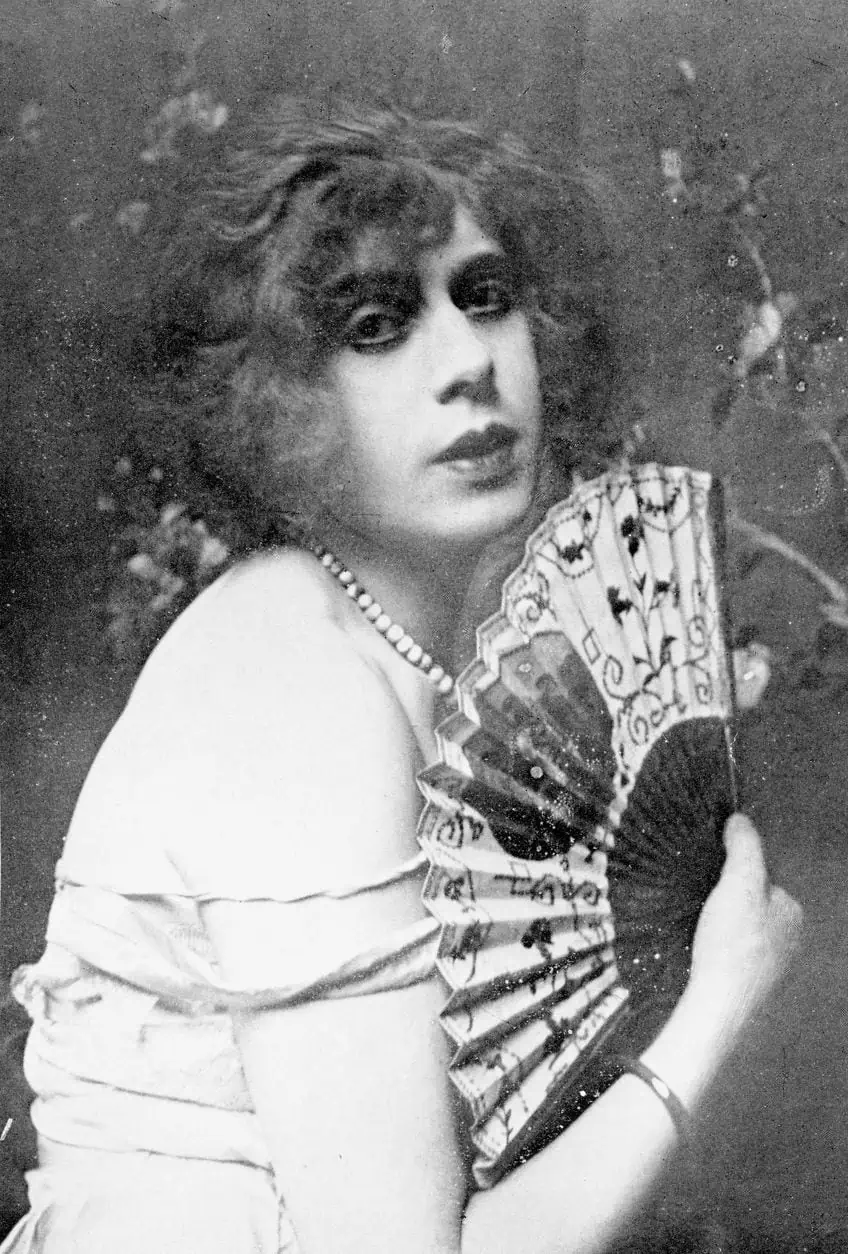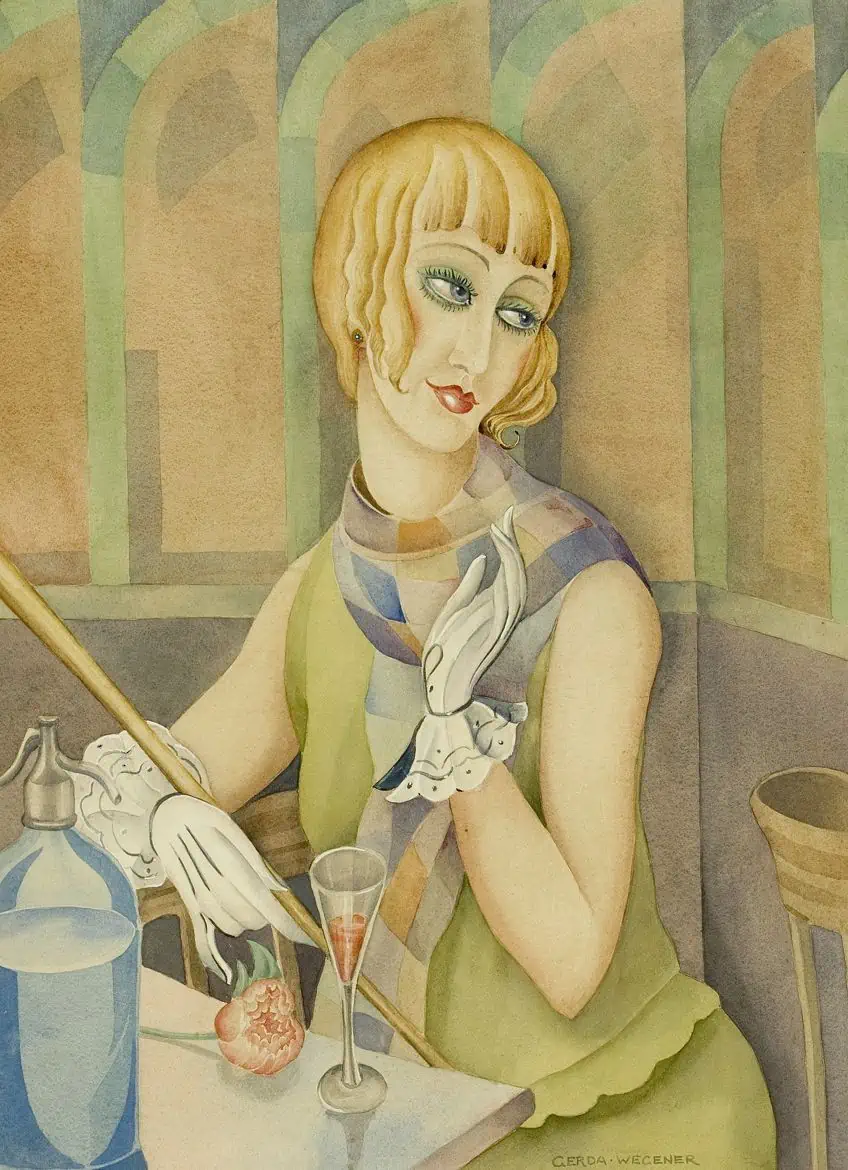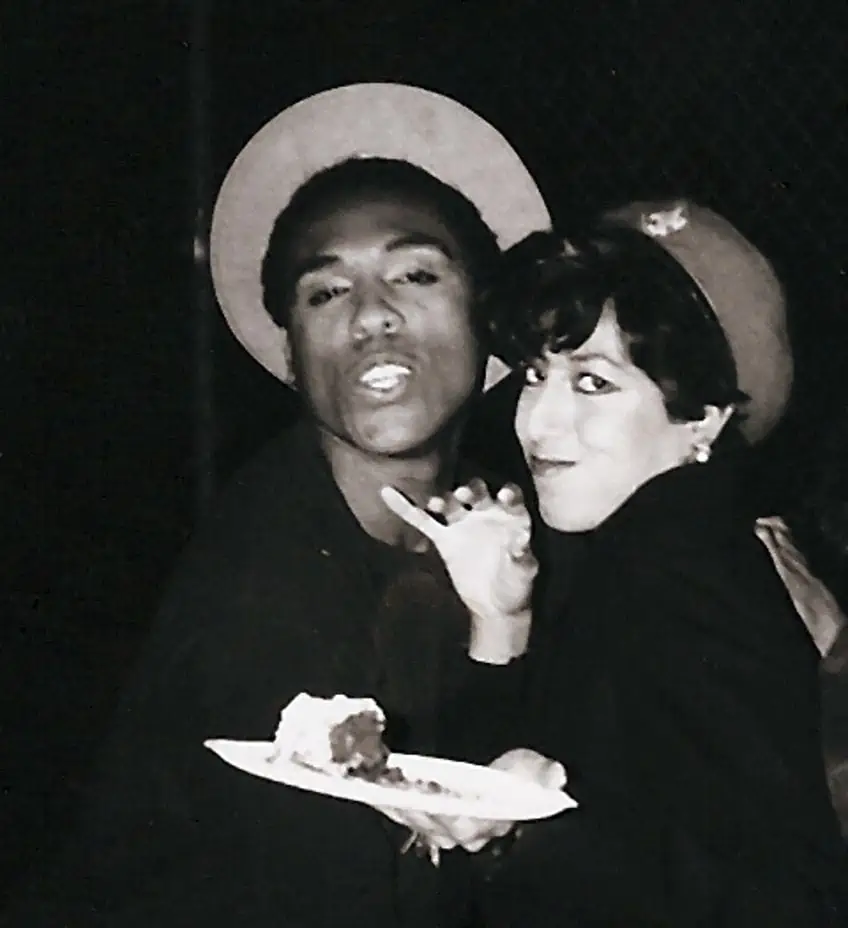Transgender Art – Art Expression Beyond the Gender Binary
Today, many artists celebrate the diverse complexities of their identities, which have been influenced and shaped by the social and political norms and conventions of the 20th century. Before gender norms emerged into question and more criticism surrounding the rejection of socially gendered roles and accepted ways of embodying one’s gender emerged, many transgender artists were forced to persevere through the conventions of society to “become”. In this article, we will explore transgender art through the various powerful and impactful transgender artists of the 21st century. We will also cover a brief history of transgender art, and a few key themes and characteristics that make art produced about transgender identity so important. Keep reading for more about these incredible icons!
Contents
- 1 An Introduction to Transgender Art
- 2 Famous Transgender Artists and Their Artworks
- 3 Frequently Asked Questions
An Introduction to Transgender Art
Today, the term transgender refers to individuals who identify as non-conforming to their assigned genders and who seek to embody their own gender, sometimes aided by the process of transitioning to their desired gender. Many artists who identify as such have often experienced the pangs of social isolation, discrimination, public violence, harassment, and verbal abuse from those in society who refuse to accept transgender individuals as people in their own right.

While every person is granted the freedom to express their own opinions on gender identity, it is the outdated forms of thinking and engrained societal roles and constructs that prevent people from accepting new ways of understanding gender. This too, does not warrant the discrimination of transgender artists and people from any space or interaction since it is up to each individual to educate themselves on the current cultures, societal developments, and understandings around gender, sexuality, and other important aspects of identity that make us human.
With this in mind, transgender art is not to be boxed as a gendered art form, however, it is historically important to historicize, document, and recognize the contributions of a select group of people who have been historically, socially, culturally, and politically marginalized. Below, we will dive into a brief history of transgender art, as well as a few common characteristics and themes in art produced by transgender artists.
We will also explore a selection of famous transgender artists and their artworks that will hopefully intrigue and inspire you!
Tracing the History of Transgender Identity in Art and History
From as far back as the adventures of Alexander the Great, transgender identities have been documented in manuscripts and records that date to around the 15th century. According to a source from the J. Paul Getty Museum, a eunuch named Bagoas was believed to be the lover of Alexander and was recorded to have changed from male to female in a Latin narrative scripted around the first century. The text was then translated in the 15th century into French and altered to straight-wash the story and conform to societal norms to present a socially acceptable story of Alexander. There have been many other accounts in Medieval literature that point to traces of transgender individuals in history. Between the 5th and the 9th centuries, there existed a group of saints who described the lives of transgender individuals. These individuals were described in detail how they were assigned as female at birth, but for a variety of reasons, they chose to live as eunuchs and monks among male-centric communities.

Until the 11th century, many more stories and accounts of transgender communities and individuals emerged across manuscripts, which is important to acknowledge given their place in art history and disseminating information. Such texts were then translated into various languages of the antiquity world, as well as European and Latin languages. Instances where women dress as men appear in around 34 scripts from late antique period Mediterranean texts. As outlined succinctly in a text by Roland Betancourt, transgender identity also requires one to consider the development of medical knowledge and its role in shaping the conventions around gender, sex, and transitioning.
Among the most prominent instances where a woman was recorded as seeking out gender affirmation surgery was found around the narrative surrounding Elagabalus, a Roman Emperor from the 3rd century. According to historical records, Elagabalus was portrayed as a transgender woman and was described as enjoying the company of female prostitutes. Elagabalus also referred to his lover as his husband, whom he wished to instate as a co-ruler and change his own title to one of a woman. His archenemy, Dio Cassius, was one figure who blatantly slandered Elagabalus and denounced his identity.
Cassius once stated that Elagabalus “carried his lewdness to such a point that he asked the physicians to contrive a woman’s vagina in his body using an incision”.
Back then physicians of the Byzantine and Medieval periods would conclude that anatomical features that appeared effeminate were instead “deformities” that could be operated on and would thus instill a sense of shame for transgender-identifying individuals. Within the context of Christianity, the empire, and asceticism, transgender individuals were viewed as aberrant members of society and thus queerness itself was denounced to shame, which in turn, led to the erasure of many transgender histories in art and history. In Modern art history, we see the expansion of artistic freedom, which began around the 1960s and is recognized as the sexual revolution. This period saw many changes in societal structures and artworks that were produced in response to the Stonewall riots of 1969.
A few common characteristics in Modern transgender art reveal the expansive nature of exploring identity through performance, sculpture, painting, and installation. Multimedia artists and cultural workers such as Cassils, Jono Vaughan, and Juliana Huxtable have explored themes of transgender identity in light of their individual social and cultural experiences to produce complex and engaging works of art that continue to shed light on the many issues that transgender individuals face. Themes such as social violence, gender equality, sexuality, the body, androgyny, patriarchy, romance, and the inner world of LGBTQIA+ communities across the world are brought to the fore of Contemporary transgender art.
Famous Transgender Artists and Their Artworks
Transgender art, therefore, includes artists who do not identify with the pre-modern binary codes of gender and thus present an exploration of the queer and transgender experience. Below, we will introduce you to a selection of some of the most iconic and influential transgender artists, whose practices each offer gems of insight into the lived experiences and history of transgender individuals.

Jamie Diaz (c. 1950s – Present)
| Artist Name | Jamie Diaz |
| Date of Birth | The late 1950s |
| Nationality | Mexican-American |
| Associated Movements, Themes, and Styles | Transgender art, love, suffering, queerness, the human condition, pride, pleasure, the queer experience, identity, and the LGBTQ+ community |
| Mediums | Drawing, painting, and illustration |
Jamie Diaz is a famous Mexican-American artist who draws from her imagination to explore themes such as suffering, the human condition, and the queer experience as a trans woman. Diaz uses recognizable motifs and art styles to include queer characters in her paintings to address the complexities of her emotions and experience. Prominent themes such as pain, pleasure, evil, and good are just a few complex dynamics featured in her work.
In 1996, Diaz was imprisoned for life with parole eligibility in the near future.
Even Flowers Bleed 02 (2014)
| Date | 2014 |
| Medium | Watercolor on paper |
| Dimensions (cm) | 30.4 x 38.1 |
| Where It Is Housed | Artist’s collection |
Diaz’s first solo exhibition, Even Flowers Bleed, was held at Daniel Cooney Fine Art in 2022 and has since inspired a short documentary on the artist and her work, which premiered early in 2023. Diaz stated that her inspiration for the work was her love for the queer community and transgender individuals, who she strongly empathizes with for their strength in continuing to live freely in society despite the bigotry and violence. Diaz also advocates for gender equality fueled by her passion for LGBTQ icons and the history of queer communities that include some of the most incredible human beings.
Greer Lankton (1958 – 1996)
| Artist Name | Greer Lankton |
| Date of Birth | 21 April 1958 |
| Date of Death | 18 November 1996 |
| Nationality | American |
| Associated Movements, Themes, and Styles | Transgender art, autobiographical art, gender, sexuality, the body, fashion, folk art, consumerism, and popular culture |
| Mediums | Sculpture and installation |
Greer Lankton was a prominent transgender artist of the early Contemporary era, whose legendary status in East Village in the 80s produced the artist’s signature doll artworks. Lankton began creating their dolls based on close friends such as Peter Hujar and Nan Goldin. Lankton’s first major show was only held 18 years after she died in New York at PARTICIPANT, INC in 2014. Lankton’s practice touches on themes such as sexuality, folk art, popular culture, consumerism, and the body, which have been compared to the art of Hans Bellmer. Famous art critic Roberta Smith had also once described Lankton’s art as comparative to the characters seen in the paintings of Egon Schiele.
Lankton’s practice extended to commissioned portrait dolls, which they created for Candy Darling and Diana Vreeland in the 1980s.
It’s All About Me, Not You (1996)
| Date | 1996 |
| Medium | Installation made up of wood, vinyl siding, AstroTurf, and paint |
| Dimensions (cm) | Unavailable |
| Where It Is Housed | Mattress Factory, Pittsburgh, Philadelphia, United States |
This immersive permanent installation was created by Lankton in 1996 and informed by their early experience of being diagnosed with schizophrenia and anorexia at 19 while struggling with drug addiction since the age of 12. Their journey in transitioning also began at 19 despite their struggle with addiction. The artist also suffered from traumatic experiences from her early childhood, which fueled the artist’s mindset in terms of choosing to stop the journey to recovery. The installation is a simulation of the apartment that Lankton once lived in, where the ceiling was covered with stars and the room was filled with dolls, pill bottles, and personal shrines to her favorite icons. Lankton’s work was shown at the Whitney Biennial and the Venice Biennale in 1995, which exposed their intimate and vulnerable experiences to the world, with art critics describing their work as “unusually distressing beauty”.
Vaginal Davis (1959 – Present)
| Artist Name | Vaginal Davis |
| Date of Birth | 1959 |
| Nationality | American |
| Associated Movements, Themes, and Styles | Transgender art, transgender painting, Contemporary art, genderqueer art, homo-core punk movement, identity, and terrorist drag |
| Mediums | Performance, painting, writing, filmmaking, and curation |
Vaginal Davis is one of the most famous artists of all time whose history in art has been severely underrated. A renowned performance artist, curator, filmmaker, and painter, Davis has created many iconic works, from their song Le Tigre to zines. Davis established the Hag Gallery in New York and is known to identify as intersex and transgender. Davis draws on their childhood experiences, which exposed the artist to themes of hybridity and gender quite early. Davis’ multicultural background also includes her descent from German, Jewish, and French Creole cultural influences. In 1978, Davis also released their first EP under the band Afro Sisters with Geza X and Amoeba Records and served as the opening act for the Smiths on their first tour. Additionally, Davis is also affiliated with the Queercore zine movement, which culminated in the self-published zine Fertile La Toyah Jackson (1982 – 1991).
The zine went on to inspire Davis to publish a series of video works known as the Fertile LaToyah Jackson Video Magazine.
Brad Pitt Deep Dish Dick Collective (2015)
| Date | 2015 |
| Medium | Watercolor pencil, Wet and Wild solid gold nail varnish, hydrogen peroxide, glycerine, Aquanet hair spray, and witch hazel on Filmstifung notecard |
| Dimensions (cm) | 21 x 14.6 |
| Where It Is Housed | Private collection |
Brad Pitt Deep Dish Dick Collective is a mixed media artwork by Davis that was sold as part of the 2020 Artists for Equality Benefit Auction. Davis’ works have also been collected by institutions such as the Art Institute of Chicago as a major contributor to a genre of trans art recognized as terrorist drag. As a figure who was neither part of the camp drag community nor the performative group of Candis Cayne, Davis was recognized as one of the most unique transgender artists on the scene. Davis is known to have several personas in drag and has been described as refusing to ease conservative tactics in Black and gay politics.

Yishay Garbasz (1970 – Present)
| Artist Name | Yishay Garbasz |
| Date of Birth | 1970 |
| Nationality | Israeli-British |
| Associated Movements, Themes, and Styles | Transgender art, trauma, memory, family history, post-war art, the Holocaust, and socio-political critique |
| Mediums | Photography, performance, video art, sculpture, and installation |
Yishay Garbasz is a prolific Israeli-British transgender photographer and video artist, who leverages multiple mediums to express concepts of trauma and post-traumatic stress caused by such memories. Garbasz’s practice is informed by their family history in the Holocaust, a horrific event of which the artist’s mother was a survivor of.
Through installation and performance, Garbasz also tackles issues related to the invisibility experienced by transgender women, as well as a political critique on population control.
Rice Field Just Before the Harvest With Target of North Korean Soldier as a Scarecrow, Baengnyeongdo (2014)
| Date | 2014 |
| Medium | Chromogenic print |
| Dimensions (cm) | 125.1 x 165.1 |
| Where It Is Housed | Ronald Feldman Gallery, New York City, United States |
Garbasz’s practice was also shaped by their photography portfolio, which the artist used to explore their travels across the world. This gave Garbasz a complex experience of the world as they stayed in many countries, including Japan in 2014, where they shot Rice Field Just Before the Harvest With the Target of a North Korean Soldier as a Scarecrow in Baengnyeongdo. It was also in Japan where Garbasz explored the impact of the Fukushima nuclear explosion, which occurred only a year earlier.
Wu Tsang (1982 – Present)
| Artist Name | Wu Tsang |
| Date of Birth | 1982 |
| Nationality | Chinese-Swedish-American |
| Associated Movements, Themes, and Styles | Contemporary art, stereotypes, transgender art, queer community, and American transgender identity |
| Mediums | Filmmaking, performance, installation, and video art |
Wu Tsang is a renowned multimedia artist and activist whose works use video, performance, and installation to explore themes of transgender identity and queerness. Tsang’s practice also encompasses filmmaking realized through short films and documentaries such as Wilderness, which showcases the lived realities of cultural spaces for queer and gender-fluid people such as the trans bar Silver Platter. In addressing such crucial topics, Tsang’s practice highlights the importance of performing such narratives that were marginalized and hidden from society and history. Tsang is based in Berlin and New York and has received praise for their approach to video art that explores a hybrid form of video art through documentary and narrative.
Tsang’s work has been exhibited at various prestigious institutions, including the Stedelijk Museum and the MCA Chicago.
Wildness (2012)
| Date | 2012 |
| Medium | Film |
| Duration | 1:17:36 |
| Screened | MoMA Documentary Fortnight, New York City, United States in 2012 |
| Where it Is Housed | The Museum of Modern Art, New York City, United States |
Wilderness is one of Wu Tsang’s most famous video artworks that first debuted at the MoMA Documentary Fortnight in New York in 2012. Tsang co-produced the work with Roya Rastegar and was a hit across many countries, including Chile, the United States, and Canada. Their film explores the trans bar culture at Silver Platter, which has been considered a historic bar to the Latin LGBT community since the 1960s. The documentary video relays the weekly performances of a group of young artists that pose questions about ownership, the queer community, and space as Tsang explores the intersections between two different LGBT communities. Moved by the Motion (2014 – 2015) is another iconic work by Tsang that was part of a series of performance works that blur the boundaries between documentary art and fiction.
Juliana Huxtable (1987 – Present)
| Artist Name | Juliana Huxtable |
| Date of Birth | 29 December 1987 |
| Nationality | American |
| Associated Movements, Themes, and Styles | Transgender art, Contemporary art, the internet, the body, conditioning, text, marginalized history, technology, politics, and transgender identity |
| Mediums | Performance, writing, and painting |
Juliana Huxtable is among the most profound transgender artists, whose legacy as a cultural icon in music, performance, and writing is much to be celebrated. The American artist is recognized as a co-founder of Shock Value, a nightlife project based in New York, as well as a multidisciplinary artist, whose concepts of conditioning, transgender identity, the internet, their body, and text have provided significant cultural contributions to the New York queer and transgender community.
The artist is also a part of the House of Ladosha collective and is based in Berlin.
Scaling (2022)
| Date | 2022 |
| Medium | Acrylic on printed canvas |
| Dimensions (cm) | 175 x 137 x 5 |
| Where It Is Housed | Project Native Informant, London, United Kingdom |
Scaling by Juliana Huxtable is one of the artist’s most recent works that gives us a new spin on transgender paintings in the Contemporary era. Huxtable’s multilayered paintings involve them posing in many theatrical positions, which are then photographed and printed onto large canvases. Huxtable presents an “archaeology of media” as they offer a visually layered and vibrant abstraction to their form, which reflects the different ways in which the artist sees themselves. Huxtable’s transgender paintings can also be found on the metaverse through their performative presentation involving the artist dressed in animal prints that explore zoosexuality on the internet and the fetishization of furries.

Cassils (Unknown)
| Artist Name | Cassils |
| Date of Birth | Unavailable |
| Nationality | Unavailable |
| Associated Movements, Themes, and Styles | Transgender art, Contemporary art, violence, political critique, identity, gender, representation, survival, body art, social sculpture, and visual criticism |
| Mediums | Performance, installation, and sculpture |
Cassils is a world-famous Contemporary trans artist who is widely recognized by their artist name as simply Cassils and not a traditional name and surname. Cassils has created some of the most visually stunning and impactful performances and installations that address representation, survival, transgender identity, and the body in a variety of rigorous interventions. Their works are reflective of the individual and shared experiences of transgender and non-conformist groups whose lived realities are often shaped by the harsh context of conditioned society.
From themes of violence and struggle to the process of transitioning Cassils’ work demonstrates a vibrancy and urgency through their ongoing practice of becoming that draws on concepts from feminism, queerness, and conceptualism.
Fountain; PISSED (2017)
| Date | 2017 |
| Medium | Performance |
| Duration (hours) | 4,800 |
| Where It Is Housed | Ronald Feldman Gallery, New York City, United States |
Fountain was part of Cassils’ final hours of their performance PISSED, which involved a 200-day long act of the artist collecting their own urine as a form of protest against the legislative assaults brought on by the Trump Administration, which banned people from using bathrooms that aligned with their genders. The artist’s urine was displayed in a transparent cube that referenced art historical works in Minimalism such as Donald Judd and was featured along 255 medical sample jars that Cassils used to collect their urine. Cassils’ performance was raw and direct, which also placed their body at the forefront of the work, as a living sculpture.
These bold and critical transgender artists provide us with a rich and diverse array of individual and shared histories that help improve social understandings of marginalized groups and their historical exclusion from art history. We hope that these incredible artists and artworks have also inspired you to explore more transgender artists who are making groundbreaking headway in contemporary art discourses.
Frequently Asked Questions
What Is Transgender Art?
The term transgender art refers to the art produced by artists who identify as transgender, and who challenge previous traditional conceptions of gender. Transgender art focuses on relaying aspects or narratives about the transgender experience.
What Are Common Themes in Transgender Art?
A few common themes in transgender art are transgender identity, history, philosophies, and ideas on non-conformance to traditional genders. Other themes found in artworks produced by transgender artists include a focus on the body, trauma, violence, and social and political critique.
Who Is the Most Famous Transgender Painter?
The renowned Danish artist Lili Ilse Elvenes, who was also recognized as Lili Elbe, was considered to be one of the most famous transgender painters who identified as a transgender woman. She practiced art under the name Einar Wegener throughout the late 19th and early 20th centuries.
Jordan Anthony is a Cape Town-based film photographer, curator, and arts writer. She holds a Bachelor of Art in Fine Arts from the University of the Witwatersrand, Johannesburg, where she explored themes like healing, identity, dreams, and intuitive creation in her Contemporary art practice. Jordan has collaborated with various local art institutions, including the KZNSA Gallery in Durban, the Turbine Art Fair, and the Wits Art Museum. Her photography focuses on abstract color manipulations, portraiture, candid shots, and urban landscapes. She’s intrigued by philosophy, memory, and esotericism, drawing inspiration from Surrealism, Fluxus, and ancient civilizations, as well as childhood influences and found objects. Jordan is working for artfilemagazine since 2022 and writes blog posts about art history and photography.
Learn more about Jordan Anthony and about us.
Cite this Article
Jordan, Anthony, “Transgender Art – Art Expression Beyond the Gender Binary.” artfilemagazine – Your Online Art Source. November 1, 2023. URL: https://artfilemagazine.com/transgender-art/
Anthony, J. (2023, 1 November). Transgender Art – Art Expression Beyond the Gender Binary. artfilemagazine – Your Online Art Source. https://artfilemagazine.com/transgender-art/
Anthony, Jordan. “Transgender Art – Art Expression Beyond the Gender Binary.” artfilemagazine – Your Online Art Source, November 1, 2023. https://artfilemagazine.com/transgender-art/.



